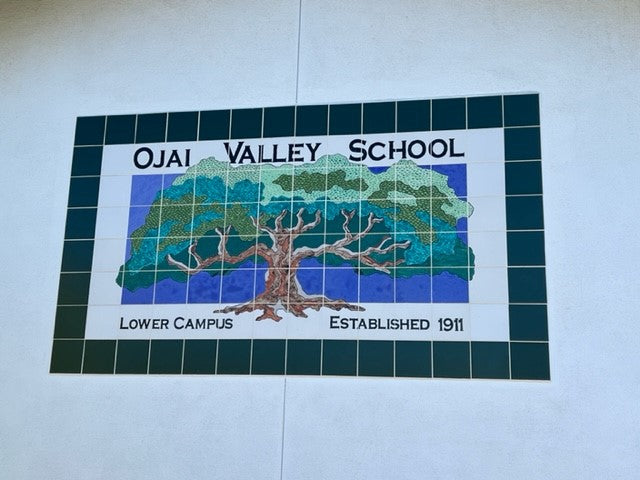In 2005, a phenomenon struck Ojai Valley School.
Piles of dirt were dumped outside of the brand new Lucila Arango Science Center at Upper Campus, and to English teacher Crystal Davis’ surprise small Narrowleaf Milkweed plants began sprouting out of the landscaping.
“My only part in it was identifying the plant,” Ms. Davis said, “then cultivating its success by making sure that the maintenance grounds crew knew what it looked like.”
These plants act as the major habitat for the endangered Monarch butterfly, which makes a major migration from Canada to Southern California every year.

The milkweed plants thrived – as did large colonies of Monarch butterflies – until the Thomas Fire ripped through the campus in 2017 and destroyed multiple buildings, including the science center, and much of the surrounding foliage. Despite efforts by Ms. Davis, the school had been unable to re-establish the Milkweed population since then, especially as new building construction was underway.
But that all changed this week.
On Wednesday, a team of students, led by Ms. Davis, spent a cold afternoon digging holes in the landscaping around the classroom buildings and planting hundreds of Milkweed plugs that were donated to the school as part of a statewide effort to restore Monarch habitat.
Early last month, Chris Amendt, founder of the nonprofit Native Monarchs, contacted Ojai Valley School about a donation of nearly 1,000 Milkweed plants to expand Milkweed gardens on both campuses.
About half the plants will be used at the Lower Campus, where Milkweed gardens are integrated into academic units on everything from butterflies to ecosystems. The other half of the donation was earmarked for the high school to replace plants lost in the fire in the hopes that the Upper Campus can once again become a Monarch mainstay.
“I wanted in earnest to get some Milkweed planted but ran up against the problem that we couldn't alter the landscape for one full year after the construction,” Ms. Davis said of the donation. “I’ve been trying to reestablish our habitat for years, so I jumped at the opportunity.”
Native Monarchs’ goal is to increase the supply of native Milkweed and nectar plant varieties for large-scale Monarch conservation programs and restoration projects.
To that end, Amendt secured a grant of Milkweed plants from another nonprofit, Monarch Watch, and then made those plants available to OVS.

At the Upper Campus, the new environmental club, headed by senior Roman Cluff-Thomson and junior Alula Alderson, are leading the student effort to replant new Milkweed across the campus.
“I’m working with Ms. Davis to organize the milkweed planting and to get my environmental club involved,” said Alula, who joined more than a half
dozen volunteers on Wednesday in the replanting effort. “This is a really important project and I can’t wait to have the Monarch butterflies back on campus.”
John Boyd, a long time employee of OVS and the photography teacher, recalls how much he enjoyed watching the Monarchs grow.
“It was cool to watch the development of those little guys from caterpillars to butterflies,” Mr. Boyd said. “I’m excited for them to be back on campus again.”
It’s been five years since the fire, and now we are finally able to restore the Longleaf Milkweed population. The OVS community has come together to support these butterflies 3,000 mile annual migration.
“I think it was fun,” said sophomore volunteer Vivian Lee after a cold afternoon planting the Milkweed. “It just felt nice, it seemed productive to put all those plants there”


